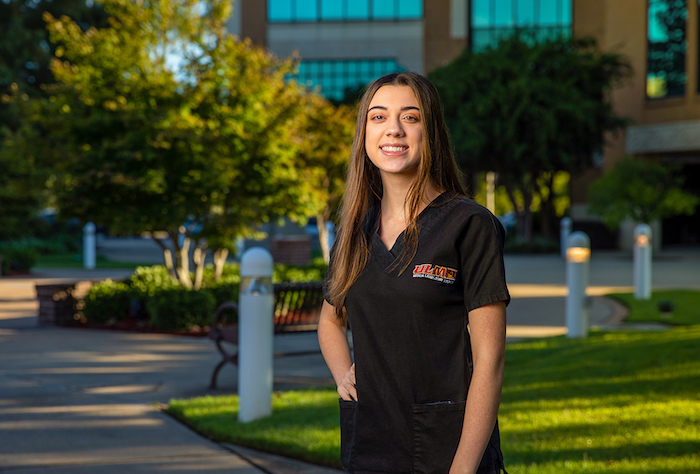

University of Louisiana Monroe Medical Laboratory Science student Alexa Garlington
participated in the highly competitive Summer Lab Science Program at Mayo Clinic's
campus in Rochester, MN.
Siddarth Gaulee/ULM Photo Services
"I give many thanks to Mayo Clinic for choosing me to work there, but I have the most gratitude towards ULM and the Medical Laboratory Science program for giving me the skills that prepared me to have such an amazing opportunity."
Alexa Garlington
By Sam Hughes
ULM Medical Laboratory Science
The coronavirus pandemic has proven the essentiality of every party of the interdisciplinary team of health care professionals dedicated to diagnosing and treating the spectrum of diseases.
One University of Louisiana Monroe student experienced hands-on how the conclusions of laboratory sciences are crucial to the overall process of medical care.
From early June to mid-August, Alexa Garlington, a ULM student pursuing a Medical Laboratory Science degree, participated in the highly competitive Summer Lab Science Program at Mayo Clinic's campus in Rochester, MN.
This program offers students entering their senior year of college the opportunity to gain experience in the clinical laboratory environment. The Mayo Clinic describes this application-based initiative by stating, "This is not an internship program, but rather an opportunity to work alongside professionals in the field of laboratory science."
The Clinical Forensic and Toxicology Laboratory where Garlington spent 10 weeks is a facility responsible for performing routine screenings and confirmation tests to identify and quantify the presence of drugs (i.e., barbiturates, opiates, cocaine, and even alcohol, etc.) and chemicals in biological fluid and tissue samples.
During her time in the laboratory, Garlington performed conformational THC sample extractions. These samples had previously been screened and were known to have some quantity of THC present, but it was her job to figure out just how much.
According to Garlington, the entire process of gaining results from a set of samples termed a "run" would take her approximately four hours from start to finish. Since THC is such a high-volume test, the lab receives hundreds of samples in a day. She would usually complete two runs in a day's work, which equates to about 72 patient samples.
When asked about her time in Minnesota, Garlington reflected on all the individuals and experiences she had the privilege to encounter.
"This summer, I have made so many memories inside and outside the lab with the people I met through the program. It is those memories and experiences that made this summer one I will never forget, and I have many people to thank for that. I give many thanks to Mayo Clinic for choosing me to work there, but I have the most gratitude towards ULM and the Medical Laboratory Science program for giving me the skills that prepared me to have such an amazing opportunity," Garlington said.
The ULM Medical Laboratory Science professional program has produced numerous clinical laboratory scientists with the competencies to perform, assess, and develop laboratory testing that physicians base about 70 percent of their diagnostic decisions upon.
According to the Bureau of Labor Statistics, because of the rapid need for clinical laboratory testing and the current shortage of medical laboratory personnel, it is estimated that job opportunities are expected to increase faster than average, with over 24,000 new positions expected to be available by 2029.